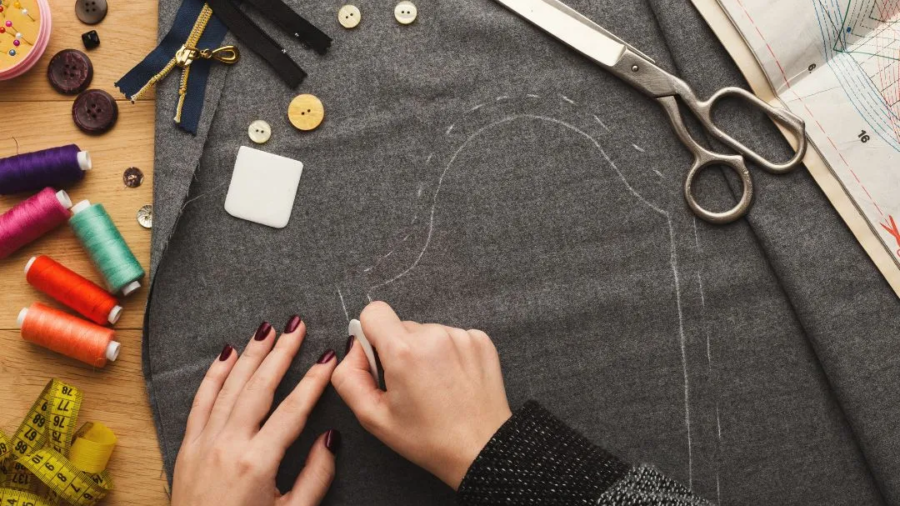Uniforms are more than just clothing—they represent professionalism, safety, and a unified brand image. For organizations like hospitals, hospitality groups, and manufacturing units, creating distinct uniforms for different roles is essential.
Steps to Create Customized Uniforms for Different Roles
Doctors, nurses, front-desk staff, or factory supervisors all need specific designs that suit their work environment. But the challenge is clear: how do you provide customized uniforms for each role without overspending?
The good news—smart strategies in design, fabric choice, and ordering can help you achieve uniformity, role distinction, and cost savings at the same time. Let’s explore how.
1. Keep the Base Design Consistent, Then Customize Key Elements
The easiest way to balance uniformity with distinction is to use a standard base design across roles, with subtle customizations to set each department apart.
For example, a hospital can have a standard scrub set, but:
- Doctors wear white coats with specific lapel trims.
- Nurses use the same scrubs with different color piping.
- Technicians have badges or embroidered department names.
This keeps the brand identity consistent while eliminating the need for entirely separate designs, cutting both design and production costs.
2. Use Modular Customization
Instead of creating entirely new uniforms for each role, think in terms of modular design changes. Small adjustments can make a uniform role-specific without driving up costs.
Examples include:
- Hospitality Groups: Front-desk staff wear the same shirt design as restaurant staff, but with longer sleeves or a different collar style.
- Factories: Supervisors and workers use the same workwear set, with reflective strips added only for those working on the floor.
- Hotels: Housekeeping staff and concierge staff wear the same base tunic, but the concierge has additional embroidery or a pocket-square feature.
By working with uniform suppliers to design modular uniforms, you reduce waste and avoid inflated costs of making completely new garments.
3. Economize Through Fabric Consistency
One of the biggest budget leaks comes from ordering different fabrics for each department. Fabric is often the most expensive element in uniforms, and switching between multiple types drastically increases costs.
Instead, keep fabric consistent across roles and vary only design details.
- A manufacturing unit could use the same durable, breathable cotton blend for both supervisors and workers—adding only reflective trims for factory staff.
- A hospital may use wrinkle-resistant fabric for all roles, with different colors for doctors, nurses, and support staff.
This bulk approach to fabric procurement can help organizations negotiate better pricing and reduce per-unit costs.
4. Bundle Orders for Better Pricing
Uniform manufacturers often provide discounts for larger, consolidated orders. Instead of placing separate smaller orders for each department, plan in advance and order for all roles in a bundled batch.
For example:
- A 5-star hotel in Mumbai needed uniforms for seven different departments. Instead of ordering separately, they bundled the order, keeping fabric consistent and applying modular design changes. The result? They saved 30% on overall uniform costs while still maintaining distinct looks for each department.
The same principle applies to hospitals ordering for doctors, nurses, and technicians, or factories ordering for supervisors and workers.
5. Leverage Badges, Labels, and Accessories
Not every difference in uniform needs to be sewn into the garment itself. Badges, ID labels, and accessories are cost-effective ways to differentiate roles while maintaining overall uniform consistency.
- Hospitals can add embroidered role-specific patches (Doctor, Nurse, Technician) instead of making entirely separate designs.
- Hotels can use scarves, ties, or name tags to set front office staff apart from housekeeping.
- Factories can use colored safety helmets or armbands for supervisors vs. workers.
This approach is not only cheaper but also more flexible, since badges and accessories can be swapped out easily when employees move roles.
6. Work Closely with a Professional Uniform Supplier
The key to achieving customization within budget lies in working with experienced uniform suppliers who understand both design and cost management. Suppliers who serve hospitals, hotels, and industrial units can guide you on:
- Choosing cost-efficient fabrics.
- Designing modular uniforms.
- Leveraging economies of scale.
- Managing role-specific customization without reinventing the wheel.
For organizations looking at long-term savings, building a relationship with a reliable supplier pays off—both in cost reduction and in maintaining brand consistency.
Final Thoughts
Customizing uniforms for different roles within the same organization doesn’t have to drain your budget. By keeping base designs consistent, adopting modular customization, standardizing fabrics, ordering in bundled batches, and using badges or accessories strategically, hospitals, hospitality groups, and manufacturing units can save money while still maintaining professionalism and role distinction.
Uniforms aren’t just clothing—they’re a reflection of your brand and a practical tool for employees. With the right approach, you can ensure every role looks sharp, stays safe, and represents your organization—without overspending.




